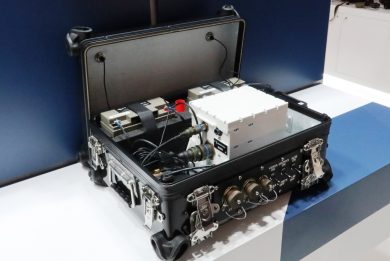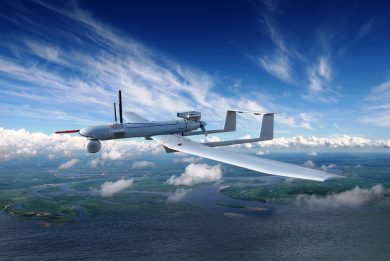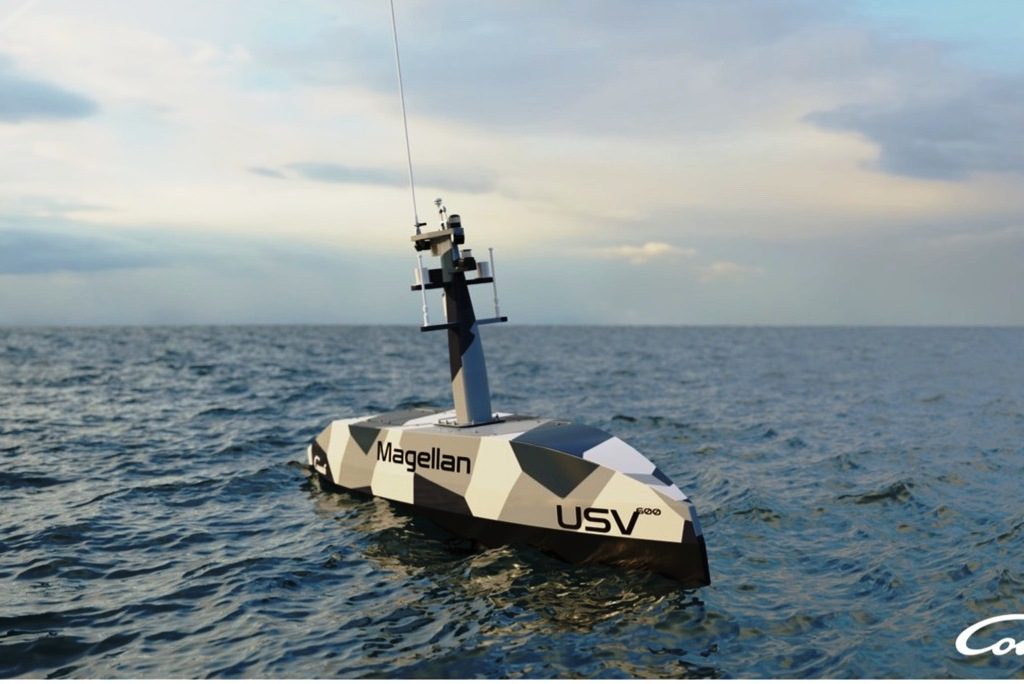
Couach unveils new interceptor and surface drone while delivering highly armed boats
During the Euronaval exhibition, the French shipyard Couach unveiled the design of a new ultra-fast interceptor called 1200 LMI (Light Modular Interceptor) and the development of the first surface drone designed by the company and called Magellan. On its stand the shipyard was also showing the model of the new generation 2200 FPB fast patrol boat, which deliveries to its launch customer were indicated as imminent.
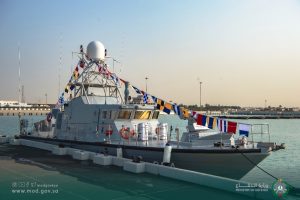
On 25 October, the Saudi Ministry of Defence announced that the first batch of 2200 FPBs by Couach had been delivery to the Royal Saudi Naval Force (RSNF), and in particular to the Western Fleet. The Middle East launch customer is reported having awarded a contract to the French shipyard for twelve of these FPBs in 2020. A versatile platform oriented towards border protection, anti-piracy and anti-smuggling missions, as well as reconnaissance, surveillance and intelligence operations, the new generation 2200 FPB represents a quantum leap compared to the previous series built by the same shipyard, providing enhanced performances and a completely new light combat system managing both guns and missiles.
With a length and beam of respectively 22.5 and 5.6 meters, the new platform is equipped with a propulsion system based on two MTU diesel engines providing a maximum speed of 30 knots, or 18 knots in Sea State 4, while maintaining high manoeuvrability. With a 10 crew accommodations characterized by comfort and habitability derived from civil domain, the 2200 FPB features a secondary ship conduction station on top of the wheelhouse. The combat system is centred on a light combat management system (CMS) supplied by FrenchNexeya; it collects and compiles all the information provided by the various surveillance equipment and redistributes it to the navigation consoles and firing stations. The CMS controls a communication suite provide by Thales and a sensor package that includes a navigation radar and a Safran Vigy Engage EO/IR fire control director. No details were provided on the large radome on top of the main mast, reportedly accommodating satellite communications equipment. The armament package includes a 20 mm Super Sea Rogue gun in the bow area and a 12.7 mm Sea Rogue machine gun in the stern area, both remotely controlled and provided by South African Dynateq International, as well as manually operated 7.62 mm machine guns. For the first time, Couach shipyard has also embarked and integrated a missile system, namely a LIG Nex1 LOGIR (Low-cost Guided imaging Rocket), which multi-tube launcher and dedicated target acquisition and detection system (TADS) are positioned behind the boat superstructures. Based on information released by LIG Nex 1, the 2.75” fire-and-forget rocket has an over 8 km maximum range and features an inertial navigation guidance and an IIR (Imaging InfraRed) seeker terminal guidance which target data acquisition is provided by the TADS to counter surface saturation attacks.
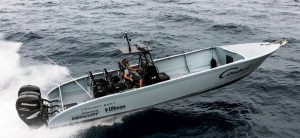
To meet a requirement of naval forces, coast guards and commando units, requesting according to the French shipyard a light and ultra-fast platform to carry out a wide range of missions, including interception of go-fast boats, protection of critical infrastructures and special forces operations, Couach developed the 1200 LMI (Light Modular Interceptor) platform. The new boat is modular by design, from the engine to the exterior and interior spaces. With an overall length of 13.95 meters in its largest configuration and capable to reach a maximum speed of 65 knots or 45 knots with Sea State 2, the 1200 LMI carries from 2×200 to 4×400 hp engines, an open or closed wheelhouse, and vast storage and/or salvage areas. Highlighting the integration and flexibility capacity of the shipyard, the new family of boats can be equipped with a wide range of equipment including radars, GNSS-assisted navigation, infrared cameras, and search lights, as well as medical equipment in the case of the MEDEVAC version.
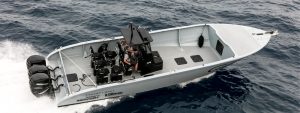
Presenting the standard configuration of the new boat, the 1200 LMI is depicted with a length and beam of respectively 13,95 and 3,80 meters and equipped with three 261 kW outboard engines ensuring a range of over 200 nm at 28 knots for missions lasting approximately one day. The platform is equipped with a closed wheelhouse with slanted windscreen and air conditioning to protect from extreme heat the crew of four members, who benefit from suspension seats to improve comfort during high speed navigation. The hull and wheelhouse are made of composite materiel and the overall design is optimized for high speed performance with excellent at-sea behaviour. The platform’s foredeck presents an optimized gunner post that allows the operator to stand and absorb boat motion and offers natural protection below the bulwark.The aft deck area is equipped with a starboard rescue zone and two benches for a total of six passengers. The same area can also accommodate a 7.62 mm machine gun.
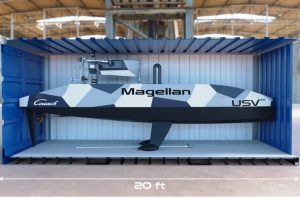
At the Euronaval exhibition, Couach also announced the development of the Magellan unmanned surface vehicle (USV), thanks to the establishing of an R&D shipyard’s department. Designed to accomplish a variety of missions from surface and underwater ISR to target detection and identification or electronic warfare duties, the USV package under development includes the vehicle, a transport container, a mission planning module, and a control centre that can be based ashore or on board vessels. The Magellan was conceived as easily transportable in a 20’ container and capable to be recovered without assistance and without deploying a recovery system thanks to its retractable mast and its lifting hook.
The USV is depicted with a length and beam of respectively 6 and 1.3 meters, and has a displacement of 1,000-1,200 kg. Made of composite materiel including carbon and kevlar, the Magellan was designed as a platform capable of coping with restrictive sea states, being highly stable and self-righting. The new USV features an innovative diesel and electric propulsion based on the use of a 13 kW microturbine allowing it to navigate for five days at a speed of 6 knots, with a reduced noise signature to ensure its discretion. To accomplish the variety of mentioned missions, it can carry a large payload, “with more than 500 litres [volume] for the integration of the equipment chosen by the end user. The drone can be equipped with modules, allowing for example the deployment of acoustic buoys or ESM type equipment,” said a shipyard statement provided to EDR On-Line.
Photos courtesy Couach

